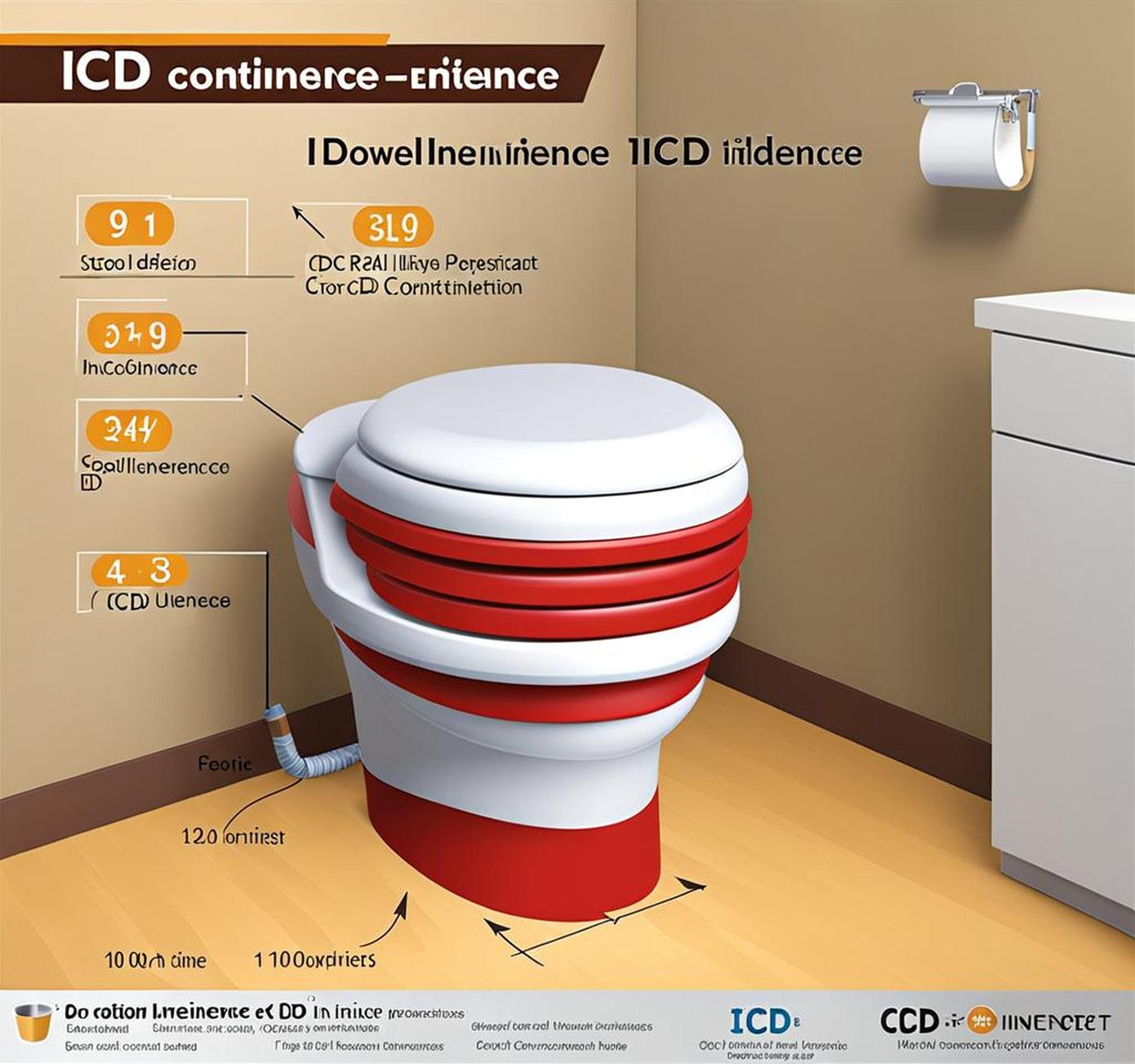Bowel incontinence, also known as fecal or stool incontinence, refers to the inability to control bowel movements. This results in the accidental passing of stool or involuntary leakage from the rectum. It’s a common condition that can negatively impact quality of life. Understanding the ICD-10 diagnosis codes for bowel incontinence is essential for proper documentation and reimbursement.
What is Bowel Incontinence?
Bowel incontinence is the inability to control defecation leading to involuntary leakage of stool. It can range from mild occasional leakage to complete loss of bowel control. While bowel incontinence can happen to anyone, it is more common in certain populations:
- Women – Pregnancy, childbirth, and pelvic floor dysfunction increase risk
- Older adults – Weakened pelvic floor muscles and neuropathy
- People with neurological conditions – Spinal cord injuries, multiple sclerosis, dementia
There are several types of bowel incontinence:
Fecal Urgency
Fecal urgency is the sudden urge to pass stool. People feel like they need to use the bathroom immediately. Frequent episodes can lead to incontinence if a restroom is not available.
Passive Incontinence
This type involves leakage of stool without sensation. Stool can seep out unexpectedly due to weakened or damaged anal sphincter muscles.

Flatus Incontinence
Some individuals experience gas incontinence or accidental passing of gas. Reasons can include nerve damage, muscle weakness, and diet.
Bowel incontinence causes several challenges:
- Skin irritation, rashes, and infection
- Social anxiety and isolation
- Difficulty maintaining hygiene and cleanliness
- Urine incontinence sometimes co-occurs
Seeking medical help is important, as effective treatments exist to manage symptoms.
Understanding ICD-10 Codes for Bowel Incontinence
ICD-10 is the 10th edition of the International Statistical Classification of Diseases and Related Health Problems. This medical classification system is used globally for diagnostic coding and billing purposes. ICD-10 contains alphanumeric codes for diseases, signs/symptoms, injuries, and causes of death.
The United States adopted ICD-10 in 2015 to replace the outdated ICD-9 system. ICD-10 codes offer greater specificity in documenting medical encounters. While ICD-9 had ~14,000 codes, ICD-10 boasts over 68,000.
Common ICD-10 Codes for Bowel Incontinence
Codes related to bowel incontinence are found in the R15 category of ICD-10:
- R15.0 – Incomplete defecation
- R15.1 – Fecal smearing
- R15.2 – Fecal urgency
- R15.9 – Full incontinence of feces
The most frequently used codes for bowel incontinence are:
- R15.9 – Documents complete fecal incontinence with total loss of bowel control
- R15.2 – Indicates fecal urgency or sudden urges to defecate
- R15.1 – Denotes fecal smearing, leakage onto clothing or skin
Proper Coding Guidelines
R15 codes cannot be listed as primary diagnoses. They provide added specification but require a condition explaining the underlying cause. For example:
- K59.4 (Anal sphincter dysfunction) + R15.2 (Fecal urgency)
- M62.89 (Other muscle disorders) + R15.9 (Full incontinence of feces)
Proper coding captures severity and maximizes reimbursement for care.
Who Uses Bowel Incontinence ICD-10 Codes?
These codes are utilized by:
- Medical coders – Assign accurate codes for documentation and billing
- Health information management – Track data and statistics
- Healthcare administrators – Plan services and allocate resources
- Providers – Support clinical decision-making and care
Correct Coding Guidelines and Documentation
Several guidelines apply when selecting ICD-10 codes for bowel incontinence:
General Coding Guidelines
- R15 codes cannot be listed first
- A root cause diagnosis must accompany R15 codes
- Add secondary R15 codes to specify symptoms
- Sequence codes correctly to maximize reimbursement
Provider Documentation Needed
Clear details in medical notes enable accurate coding, for example:
- Description of incontinence episodes
- Sphincter tone and neurological function
- Severity and lifestyle impact
- Relevant medical history and conditions
Query Risks of Non-Specific Codes
Ambiguous diagnosis descriptions may prompt queries, delayed reimbursement, and denied claims. Watch for:
- Non-specific codes like R15.9 only
- Unclear documentation of frequency and severity
- No cognitive or rectal exams noted
Improving Bowel Control Through Lifestyle Changes
While ICD-10 codes help classify bowel incontinence, addressing the root causes and making lifestyle modifications can improve control. Strategies include:
Diet Modifications
- Increasing soluble fiber – Fruits, vegetables, whole grains
- Avoiding foods that can cause loose stools like dairy, sugar alcohols, fried foods
- Staying hydrated with 64+ ounces of fluids daily
Bowel Habits
- Establishing a bathroom routine
- Doing Kegel exercises to strengthen pelvic floor
- Avoiding straining during bowel movements
Medications and Treatments
- OTC medications for symptomatic relief – Imodium, fiber supplements
- Prescriptions for severe cases – Loperamide, Amitriptyline
- Sacral nerve stimulation, injections, or surgery if needed
Bowel incontinence can significantly disrupt patients’ quality of life. ICD-10 codes like R15.9 accurately capture incontinence symptoms and support correct billing. However, addressing underlying causes through medication, diet, behavioral strategies, and sometimes surgery offer the best chance for improving bowel control.
Understanding ICD-10 codes for fecal incontinence provides the starting point for proper documentation, treatment, and hopefully relief from this condition’s challenges.
